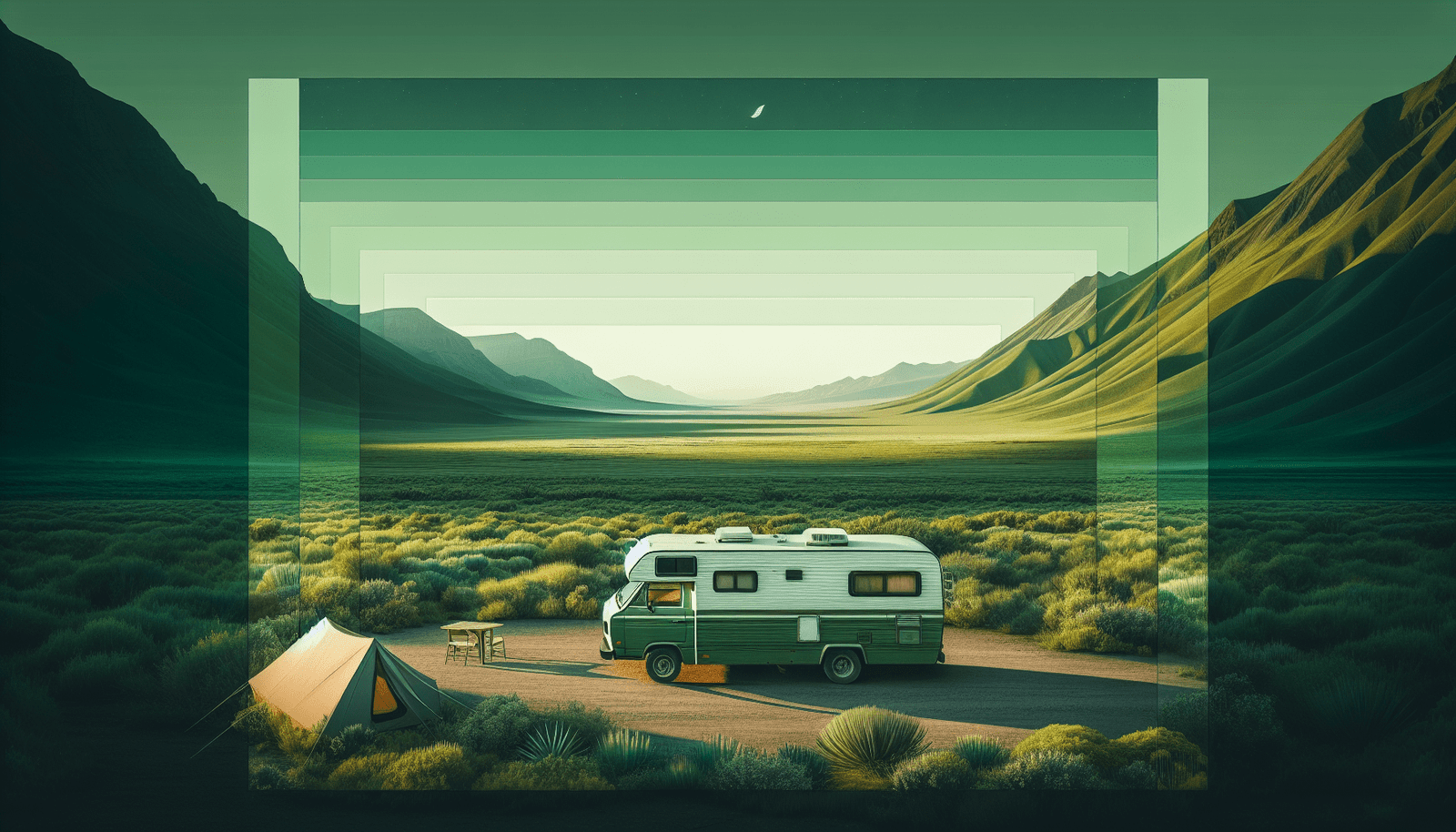When you’re out exploring the great outdoors, you might come across the term “dry camping,” which sparks curiosity about its meaning. Dry camping, also known as boondocking, refers to camping without the conveniences of traditional campsites—meaning no hookups to water, electricity, or sewer systems. In this form of camping, you rely entirely on what you bring with you, making it an experience that brings you closer to nature and offers a sense of adventure and self-sufficiency. By understanding the essentials of boondocking, you can better prepare for an off-the-grid escapade that promises a unique and fulfilling connection with the wilderness.
What Is Dry Camping Called?
Have you ever heard of dry camping and wondered what it really means and what other names people use to refer to it? Whether you’re new to camping or a seasoned adventurer, understanding the various terms and nuances can help you better prepare for your next outdoor escapade.

What Is Dry Camping?
Dry camping, also known as boondocking, is the practice of camping without the use of hookups commonly found at RV parks or campgrounds. This means relying on your own resources for water, electricity, and waste management.
Common Terms for Dry Camping
Understanding the terminology can make it easier to connect with other campers and find suitable locations. Here are some of the terms you’ll come across:
| Term | Description |
|---|---|
| Boondocking | Often used interchangeably with dry camping, boondocking generally refers to camping in more isolated, undeveloped areas, typically on public lands. |
| Primitive Camping | Another term for camping without modern amenities—no restrooms, water hookups, or electric outlets. |
| Wild Camping | This is more commonly used in Europe and describes camping in the wild, away from established sites or facilities. |
| Dispersed Camping | Typically refers to camping on national forests or Bureau of Land Management lands in the U.S., away from designated campgrounds. |
Why Choose Dry Camping?
You might wonder why anyone would forgo the conveniences of established campgrounds. Here’s why:
Freedom and Flexibility
Dry camping allows you to camp in remote places with stunning scenery, away from the crowds often found in established campgrounds. You have the flexibility to choose your location, often with fewer restrictions.
Cost-Effective
Many dry camping locations, especially on public lands, are free or require a minimal fee. This can drastically reduce the cost of your camping trip, allowing you to travel more often or for longer periods.
Close to Nature
By camping away from established sites, you often find yourself closer to nature. It’s just you, the stars, and the calming sounds of the wilderness.
Skill Building
Dry camping challenges you to be more self-sufficient and resourceful. It necessitates planning and problem-solving, helping to build valuable outdoor skills.
Preparing for Dry Camping
Preparation is key to a successful and enjoyable dry camping experience. Here are some crucial steps:
Research Your Location
Before you head out, research potential camping spots. Use forums, camping apps, and local resources to find suitable locations for boondocking. Make sure to check regulations and restrictions for the area.
Self-Sufficiency
Being self-sufficient is essential, as you won’t have access to amenities:
- Water: Carry enough water for drinking, cooking, and cleaning. Consider water purification systems if you plan to use natural water sources.
- Power: Solar panels, generators, and batteries can provide the power you need for your equipment and devices.
- Waste Management: Plan how to handle human waste, trash, and greywater in compliance with Leave No Trace principles.
Packing Essentials
Here’s a checklist to help you pack for a comfortable dry camping trip:
| Essential Item | Why You Need It |
|---|---|
| Water Containers | To store and transport water. |
| Solar Panels/Generator | To provide necessary power. |
| Waste Bags and Containers | For managing trash and human waste. |
| Cooking Supplies | Portable stove, fuel, pots, pans, and utensils. |
| First Aid Kit | For treating minor injuries and medical needs. |
| Navigation Tools | Maps, GPS, and compass to find and navigate your location. |
| Shelter | Tent, RV, or campervan suitable for the terrain. |
| Warm Clothing | Layers to stay warm during colder nights. |
| Tools | Multi-tool, shovel, and emergency repair kits. |
| Lighting | Headlamps, lanterns, and extra batteries. |
Location Scouting
Finding the perfect spot for your dry camping adventure is part of the fun. Here’s where to look:
Public Lands
In the U.S., many boondocking opportunities exist on Bureau of Land Management (BLM) and National Forest land. These areas often allow dispersed camping and provide an abundance of natural beauty.
State and National Parks
While these parks sometimes restrict boondocking, many have designated dispersed camping areas where you can dry camp. Always check specific park regulations before setting out.
Apps and Websites
Several apps and websites can help you find great dry camping spots:
- Campendium: User reviews and information on both established campgrounds and boondocking spots.
- iOverlander: Popular among international travelers, this app offers a wealth of global camping insights.
- FreeCampsites.net: Focused on free and low-cost camping options in North America.
Local Knowledge
Sometimes, the best spots aren’t listed online. Local outdoor outfitters, visitor centers, and fellow campers can often provide valuable information on the best spots to camp.

Challenges of Dry Camping
Dry camping can offer unparalleled experiences, but it also comes with its share of challenges:
Limited Resources
Without hookups for water, sewer, and electricity, you’ll need to carefully manage your resources. This means conserving water, rationing power, and planning waste disposal.
Weather Dependency
Weather can significantly impact your dry camping experience. Sudden storms, extreme temperatures, or high winds can make conditions difficult. Always check the weather forecast and plan accordingly.
Safety Concerns
Remote locations can come with safety risks, including wildlife encounters and limited access to emergency services. Carrying a first aid kit, maintaining situational awareness, and having a communication plan are vital.
Legal Considerations
Not all public lands allow boondocking, and restrictions can vary widely. Make sure to understand and comply with the rules to avoid fines or other complications.
Best Practices for Dry Camping
Following some best practices will help ensure a great experience for you and future campers:
Leave No Trace
Minimize your impact on the environment by following the Leave No Trace principles, which include packing out all garbage, respecting wildlife, and leaving natural features undisturbed.
Respecting Local Communities
Sometimes, boondocking spots are near small towns or residential areas. Be considerate of local communities by keeping noise levels down and not overstaying in one place.
Safety First
- Emergency Plan: Have an emergency plan and a means of communication in case something goes wrong.
- Secure Food: To avoid attracting wildlife, store your food in secure containers and follow guidelines for food storage.
- Know Your Limits: Be realistic about your skills and the challenges you can handle, especially if you’re new to dry camping.
Stories from the Road
Hearing about others’ experiences can provide inspiration and practical tips. Here are a few stories from seasoned dry campers:
Finding Solitude in the Desert
Rebecca and Tom, a couple from Arizona, love boondocking in remote desert areas. They find peace in the solitude and vast landscapes, often going days without seeing another person. Their tip? Always have a good supply of water and a way to generate power—solar panels have been their savior.
A Family Adventure in National Forests
The Johnson family started boondocking to get away from crowded campsites and experience nature more intimately. They particularly enjoy national forests, where they can hike, fish, and explore without bumping into other campers. Their advice to families? Be prepared for anything and involve the kids in planning and setup. It makes the experience more enjoyable for everyone.
Solo Journeys on Public Lands
Daniel, a solo traveler, uses boondocking as a way to explore lesser-known parts of the country. He’s found some incredible spots on BLM land that offer serenity and natural beauty. His top tip for solo campers? Always let someone know your plans and check in regularly.
Conclusion
Dry camping, or boondocking, provides an incredible way to explore the great outdoors with a sense of freedom and adventure that’s hard to match. Whether you’re drawn to it for the solitude, the cost savings, or the chance to hone your outdoor skills, preparation and respect for your surroundings are key to a successful experience. So pack your essentials, plot your course, and get ready to discover the joys of dry camping.
Remember, the journey is as important as the destination, and dry camping offers a unique way to immerse yourself in the journey. Happy camping!
